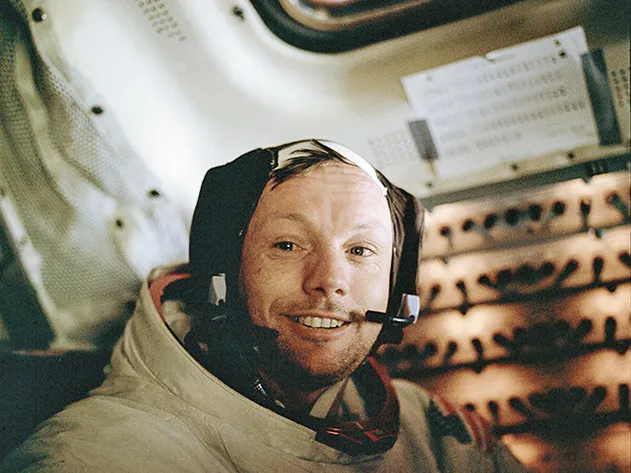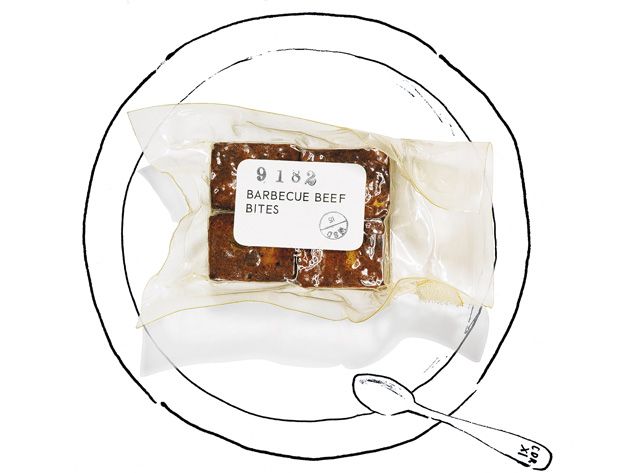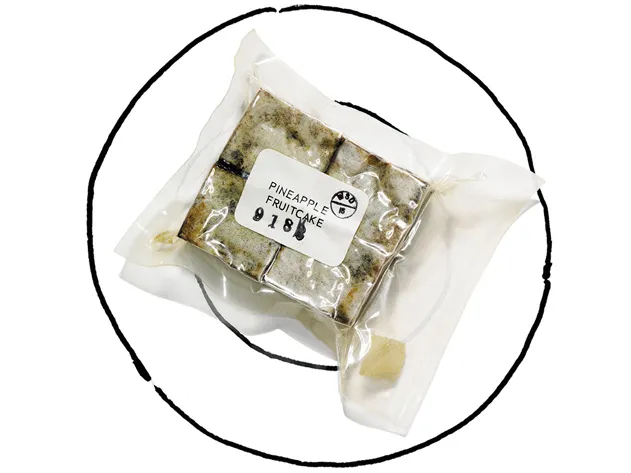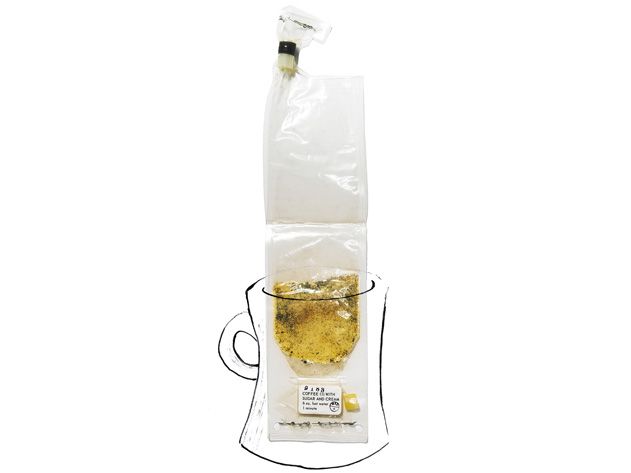Unpack a Meal of Astronaut Space Food
Space-age spaghetti and meatballs, along with other tastes of home, gave Apollo astronaut crews a boost
/https://tf-cmsv2-smithsonianmag-media.s3.amazonaws.com/filer/Rocket-Fuel-space-food-631.jpg)
Surely I’m not the only one whose primary memory of childhood trips to Washington, D.C. focuses less on my exposure to the splendid pageant of democracy, or soaking in the accumulated treasure of America’s cultural history but, rather, on a 3- by 3-inch foil-wrapped block of something called astronaut ice cream. This was before freeze-dried ice cream had become standard museum gift-shop fare—obviously way before the advent of www.astronauticecreamshop.com. The highlight of a weekend in the nation’s capital was unwrapping that weirdly light packet, revealing the tricolored brick within. It had the consistency of Styrofoam and left a strange, slick film on the back of your teeth; even at that age, if pressed, I would have had to admit that regular, frozen Earth ice cream was in every way superior. But astronaut ice cream came with the ultimate value-added, better than hot fudge or peanuts: I was eating what astronauts ate!
As it turns out, I wasn’t. Or, rather, I was eating what only very few astronauts ever ate (unless, of course, they too grew up visiting the museum gift shop). Freeze-dried ice cream did make an appearance on the Apollo 7 mission, in 1968, but was scratched from the space program soon after. The astronauts, it seems, didn’t like the stuff. The good news is that, as the Smithsonian’s collection amply demonstrates, the history of feeding men and women in space is plenty fascinating without it.
The first thing you have to realize about space, says Jennifer Levasseur, who curates the some-485 items of space food at the National Air and Space Museum, is that it changes everything about what you can and cannot eat. Knives, for instance, pose a hazard; an accidental puncture of equipment could be catastrophic. In the highly flammable, oxygen-rich environment of a space ship, no packaging or utensils can run the risk of creating a spark. Famously, a corned-beef sandwich was smuggled aboard Gemini 3 by pilot John W. Young. This may have been seen as a triumph for devotees of delicatessen, but it was seriously frowned upon by the NASA powers that be.
Like a kid’s lunchbox at the end of the school day, the collection Levasseur administers is in some ways a barometer of failed foods. That is, leftovers—freeze-dried packets returned to Earth, unopened and summarily rejected. (Three signature NASM examples are on offer here : beef-barbecue cubes, fruitcake and coffee with cream—unused from Neil Armstrong’s meal allotments, avoided during the Apollo 11 mission to the Moon he commanded in 1969.) “We have a lot of instant breakfasts,” she says. “I get the feeling these were the kinds of guys who just woke up and drank coffee.” Foods transformed into totally unrecognizable forms also fared poorly—which may explain the failure of astronaut ice cream. “There was a ‘bacon bar’ that looks something like a granola bar,” adds Levasseur. “We have quite a lot of those.”
Conversely, there tend to be fewer of those items that did prove popular: hot dogs, spaghetti and meatballs, shrimp cocktail. Here, too, the extreme conditions of space become the arbiters of taste. In a weightless environment, all the fluids that usually drain out of one’s nasal passages have a tendency to stay put, leaving astronauts as stuffed up—and hobbled when it comes to a sense of taste—as any cold sufferer. It’s not surprising that the most popular foods have been those loaded with spice and salt.
That may not have been a big deal in the old days, when missions lasted a couple of weeks at most, but now astronauts depart on multi-month stints. It’s become imperative, says Vickie Kloeris, NASA’s manager of food systems for the International Space Station, to lower sodium for long-term space travelers, as well as to provide more variety. There is also the delicate matter of international relations. On the space station Mir, for instance, the Russian space program initially controlled all ration systems. It quickly became apparent that our post-Soviet partners had stayed closer to the bare-bones “tubes and cubes” food philosophy of space travel’s earliest days. “Culturally it’s...different,” Kloeris puts it, with great diplomacy. Now, it’s nice to imagine mealtime at the International Space Station—staffed at various times by astronauts from Japan, Russia, the United States, Canada and elsewhere around the globe—as the coolest school cafeteria in the universe, with its students trading wildly different foodstuffs back and forth.
The American menu alone reflects how far we’ve come in our diets here on the terrestrial plane. There are ethnic dishes (teriyaki beef, cashew curry chicken, “Mexican” scrambled eggs) alongside enduring classics like spaghetti and meat sauce. There are more vegetable dishes: cauliflower, broccoli, asparagus. And if space hasn’t quite gone local and seasonal or “farm to table,” there is a complement of fresh fruits and vegetables, packed at the last minute instead of weeks in advance of a mission.
Incredibly, one thing that the astronauts still don’t have is proper ice cream. This is because while we can manage to send humans 200,000 miles into the vast unknown and bring them home safely, it is apparently beyond our capacity (except for a brief time on the Skylab space station) to provide them with a functioning refrigerator while there. It simply takes too much power, Kloeris explains.
Something else remains the same: For the astronauts, eating, the most elemental ritual of daily life, is a vital psychological tether to the world they’ve left far behind. “We try to make the food emulate Earth food as much as possible,” Kloeris says. “It keeps them connected.” And, by the same token, it keeps us earthbound folks connected, too, to the men and women floating far above the Earth. Because, in fact, it turns out to be true: We eat what astronauts eat!



